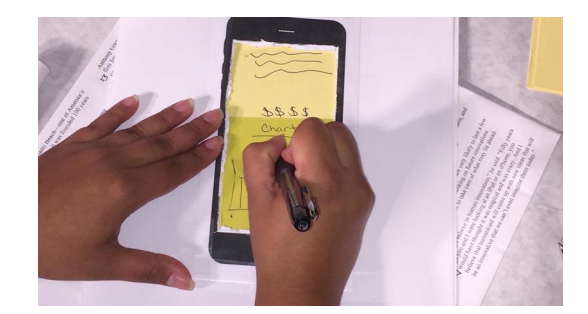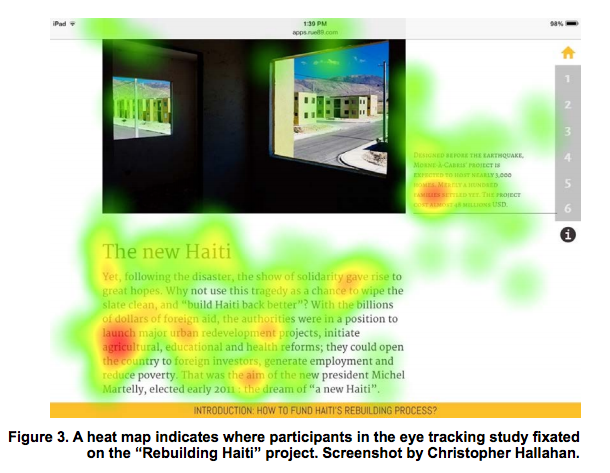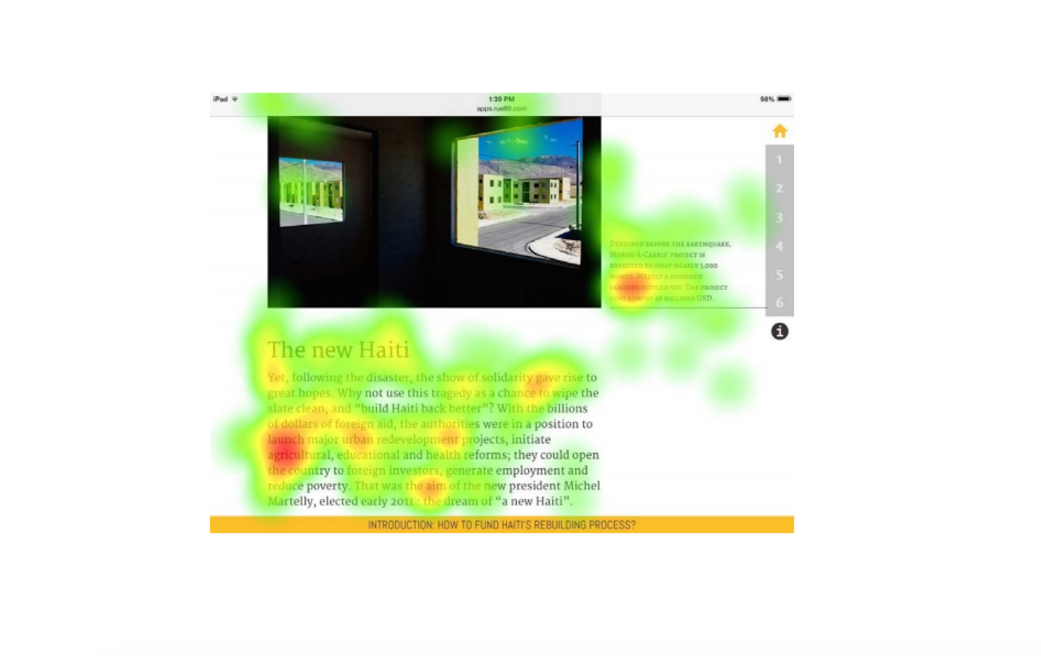Five takeaways from new study on millennials reading longform stories on mobile
You’ve done the weeks and possibly months of reporting, you’ve crafted thousands of words, and now you’ve packaged your longform story for mobile.
But will people read it?
Yes, especially if you reduce distractions, break up sections of text, and use relevant visuals and interactive elements. That’s according to a new report published last month by researchers at the University of Missouri’s Donald W. Reynolds Journalism Institute that surveyed the longform mobile reading habits of 53 millennials using “eye tracking, semi-structured interviews, focus groups and paper prototyping.”
Storybench pulled out five takeaways from the study.

Use the rotation and swiping capabilities of mobile to enhance the longform reading experience
- ” ‘Interactive’ features mentioned by our participants included entering text, clicking, tapping, swiping, and scrolling. Cellphones may extend the notion of interactivity beyond the capability of projects designed for laptops: When building the mobile version of a longform article, one group in the paper prototyping study utilized the rotation and motion capabilities of phone to guide viewers interested in accessing video.”
Visuals should complement the text while breaking it up
- “Overall, eye tracking participants liked when photographs provided emotional or informational material, such as the images of the Holmes children clinging to the dock in “[The Guardian‘s] Firestorm” and documentary-style photography in “[Rebuilding] Haiti.” Those photographs complemented the story text by providing pictures that deepened the experience of reading the story.”
- “Photographs provide a break for the eye when scrolling, participants in eye tracking and paper prototyping studies said. Unlike large sections of text that are part of the main story (“story text”), which participants in the eye tracking study said were sometimes overwhelming, not one eye tracking participant expressed frustration at seeing a photograph appear mid-scroll.”
Stories were more likely to be shared if they were relevant to readers’ lives, interests and geographies
- “They were most likely to read and share longform projects if they found the topic to be relevant to their lives, interests, and geographies … If a project was not deemed relevant or interesting to the participant and/or the participant’s social media contacts, it was seen as unworthy of being shared. “
Mobile reading is filled with distractions. Try to eliminate them
- “Distractions while participants viewed projects on cellphones included movement within the study location, the volume of the audio within the projects, and the integration of ambient sound with some projects. Functional purposes of the cellphone, such as texting, notifications, and calls — even when participants were asked to silence phones or turn off notifications — were sources of distraction. Distractions while participants interacted with projects on laptops were based on the design of the story, such as page backgrounds that held moving images or videos that played when users were not expecting it.”
Don’t rely too heavily on infographics. They can be overwhelming
- “Infographics can relay information clearly and fast—or they can overwhelm with too many images, design elements, and data. In “[Planet Money Makes A] T-Shirt,” eye tracking participants said that they enjoyed the variety and simplicity of the infographics, including a chart that relayed minimum wage information around the world and a photographic infographic of how cotton becomes yarn.”

Latest posts by Aleszu Bajak (see all)





